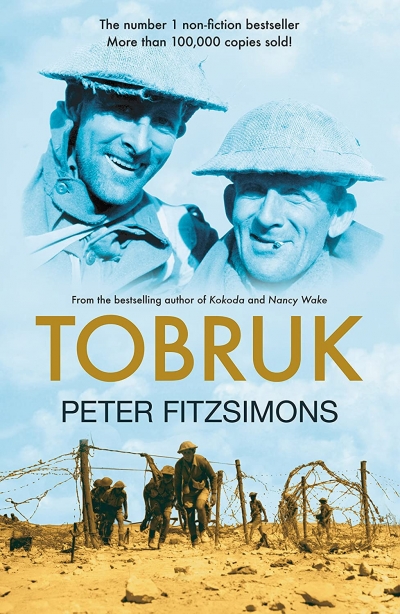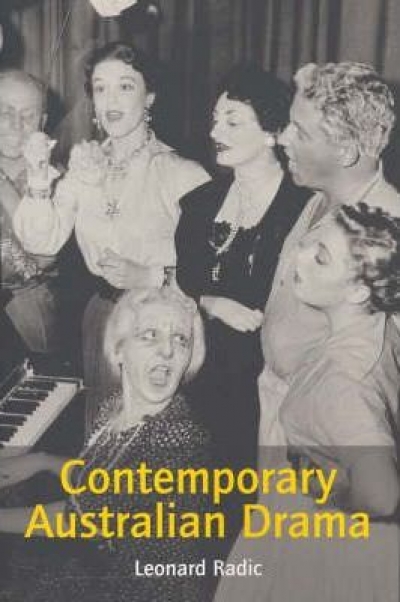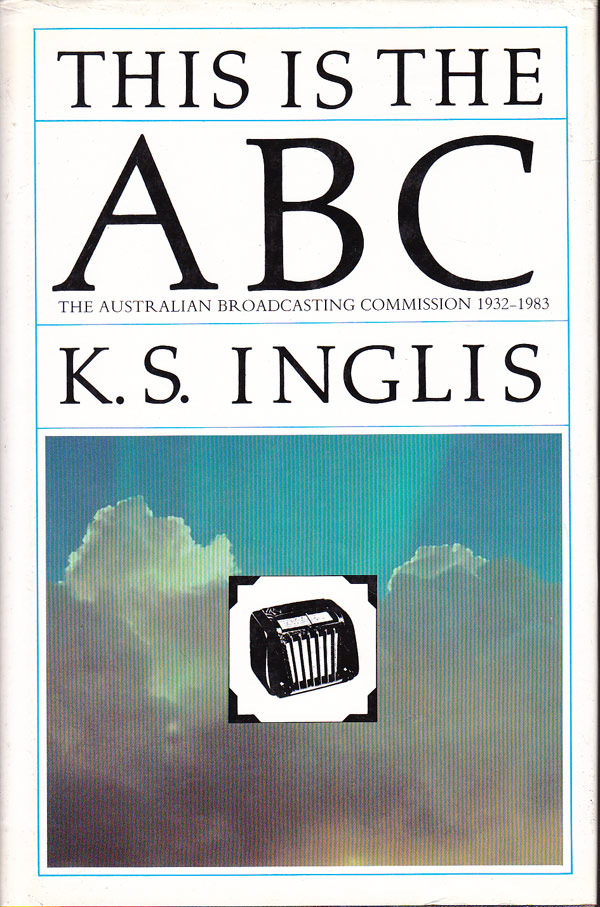History
Saving Australia: Curtin’s secret peace with Japan by Bob Wurth
As a middling country far from the centre of major world events, Australia has usually bobbed about in the wake of greater Pacific powers. After being a dependency of Britain for nearly two centuries, the country was accustomed to having its fate decided by distant power brokers. Yet Australian leaders occasionally attempted to strike out on their own in pursuit of what they saw as distinctively Australian interests. Alfred Deakin did it in 1908 when he ignored the usual diplomatic niceties of consulting the British Foreign Office before inviting the American fleet to visit Australia; Billy Hughes did it with his grandstanding at the Versailles peace conference of 1919; and Robert Menzies and John Curtin did it during the desperate days of mid-1941, when they tried to keep Japan out of the war, as British Empire forces struggled to maintain their tenuous hold on the Mediterranean.
... (read more)When I started reading My Israel Question, the Israel Defence Force Chief of Staff had just vowed to ‘turn back the clock in Lebanon by twenty years’; and the demolition was underway. Beirut’s airport, major roads, bridges, power generation facilities and other civilian infrastructure had been bombed, and villages and densely populated suburbs were being reduced to rubble. In a report some weeks later (August 23), Amnesty estimated that 1183 Lebanese had been killed, mostly civilian, about one-third of them children. The injured numbered 4054, and 970,000 people were displaced; 30,000 houses, 120 bridges, 94 roads, 25 fuel stations and 900 businesses were destroyed. Israel lost 118 soldiers and 41 civilians, and up to 300,000 people in northern Israel were driven into bomb shelters. Israel estimates that Hezbollah, the putative object of its wrath, lost about 500 fighters.
... (read more)Books like this are not written for people like me, and it is only fair to acknowledge that at the outset. ‘Australia’s most beloved popular historian’ (he must be, it says so on the inside flap) actually doesn’t want to be regarded as an historian, but as a storyteller (he says so himself), and so has little or no interest in satisfying the requirements and expectations that a professional historian might seek to apply to his undertaking. He will make a lot of money in the process, and good luck to him.
... (read more)More revisionism, I sighed, viewing the title of this book. First it’s the extent of frontier warfare between Indigenous Australians and settlers, now it’s the 1930s Depression. Doubtless in the next year or two we shall have a history demonstrating that the trauma of Gallipoli has been much exaggerated, since most of those who took part survived and some lived to ripe old ages. I was too hasty. David Potts has produced a subtler and more nuanced study than might be expected from the book’s title and advance publicity. Some of his findings are open to debate, but he underpins his arguments with evidence based on many years of oral history research with his undergraduates in the splendidly creative school of history at La Trobe University. It is this use of oral history that makes for controversy.
... (read more)When Prince Hamlet cried ‘The play’s the thing’, he was about to use a performance of The Mousetrap to demonstrate a point central to his purpose: he intended to ‘catch the conscience of the king’. Nearly 400 years later, British playwright David Hare endorsed and expanded Hamlet’s utilitarian approach, writing: ‘Indeed, if you want to understand the social history of Britain since the war, then your time will be better spent studying the plays of the period … than by looking at any comparable documentary source.’
... (read more)This book has one of the most beautiful covers you could hope to see: a Margaret Preston woodcut of Sydney Harbour, in rich blue, scarlet and ivory. Nor does the inside disgrace the exterior. It is a long time since anyone attempted a history of New South Wales, more than a century according to the blurb, presumably a reference to T.A. Coghlan’s annual publication, The Wealth and Progress of New South Wales, the last edition of which appeared in 1901. Beverley Kingston is highly qualified to do the job, and the twentieth-century detail is especially good.
... (read more)Francis de Groot: Irish fascist, Australian legend by Andrew Moore
There was a time in Australia when right-wing citizens of this country were passionate and organised enough to bring the left-led state of New South Wales to the brink of civil war on political grounds. This violent opposition was led by rebel elements among ‘as many as 30,000 members’ of a conservative and ‘formally constituted civilian reserve’ known as the Old Guard. Impatient with the staid organisation, they had forged a more militant collective under the guise of the New Guard. One of the major players in this evolution was Captain Francis Edward De Groot, an antique-dealer and reproduction furniture manufacturer from Ireland, whose ambition and taste for adventure had led him to Australia. De Groot went on to star in the most famous scene of this political drama and to carve his name into Australian popular myth by usurping Premier Jack Lang as the ribbon-slasher at the opening of the Sydney Harbour Bridge.
... (read more)What If?: Australian history as it might have been edited by Stuart Macintyre and Sean Scalmer
Thirteen scholars here have fun changing the course of Australian history, but this diverting exercise has the serious purpose of making the real history fresher, more complex and surprising.
Even the more implausible scenarios can have this effect. Marilyn Lake imagines Prime Minister Alfred Deakin declaring independence from Britain in 1908 and aligning Australia with the United States, which brings to our attention the high place in the Australian imagination accorded to the American republic as exemplar, potential ally and partner in the spreading of a vigorous white manhood across the new world. Ann Curthoys ponders the character and influence of feminism by imagining a men’s movement emerging in the 1970s.
... (read more)This is the ABC: The Australian Broadcasting Commission 1932–1983 by Ken Inglis
Ken Inglis is now as much a part of the history of the ABC as any of the charismatic broadcasters, mercurial managers or audiences – devoted and indignant – that his two monumental histories chronicle. He has become the repository, the source, the critical race memory of the ABC, ‘just three years older’ than the phenomenon he examines.
The list of corrigenda at the end of the new edition of This Is the ABC (first published by Melbourne University Press in 1983) underscores the point: insiders, listeners, viewers and politicians have inundated him with corrections and information to refine and expand his already minutely detailed volume one of the history. Listeners plead with him to include the story of the newsreader who announced that a lady had been bitten on the funnel by a finger-webbed spider. Other responses are less benign. Solicitors for Sir Charles Moses, for thirty years the ABC’s general manager, write to Inglis in 1983 listing ‘imputations’ in his book which they claim are grossly defamatory of Sir Charles’s good name and reputation. Sir Charles himself, at the Broadcast House launch of the first volume in 1983, greeted the disconcerted author with the news that he would be hearing from his solicitors. ‘I did my best to look and sound at ease when Dame Leonie called me to the dais’, recalls Inglis. The case was not pursued, and the relevant documents are now deposited in the National Library. But it is characteristic of the man and the historian that Inglis should ‘remain sad that although my admiration for the ABC’s principal maker was evidently clear to reviewers and other readers, the subject himself could not see it’.
... (read more)Paper Empires: A history of the book in Australia, 1946-2005 edited by Craig Munro and Robyn Sheahan-Bright
This eagerly awaited volume is the last in a trilogy which will recount the history of the book in Australia. The first volume, which will cover the years to 1890, is in preparation. Volume Two, A History of the Book in Australia, 1891–1945: A National Culture in a Colonised Market, edited by Martyn Lyons and John Arnold, was published in 2001.
What is a history of the book? The present volume regrettably does not tell us. We need to consult Volume Two, where Martyn Lyons tells us that it is the history of print culture: ‘The historian of the book is concerned not just with the creative imagination but with all the processes of production, including typesetting, binding, illustration, editing, proofreading, designing, and publishing.’ In addition to the history of book production, the history of print culture encompasses distribution and reception, which involves bookshops and booksellers, libraries and librarians, and, by no means least, readers. The promotion of reading and its hindrance (censorship and other factors) are important topics. It is a broad canvas.
... (read more)










